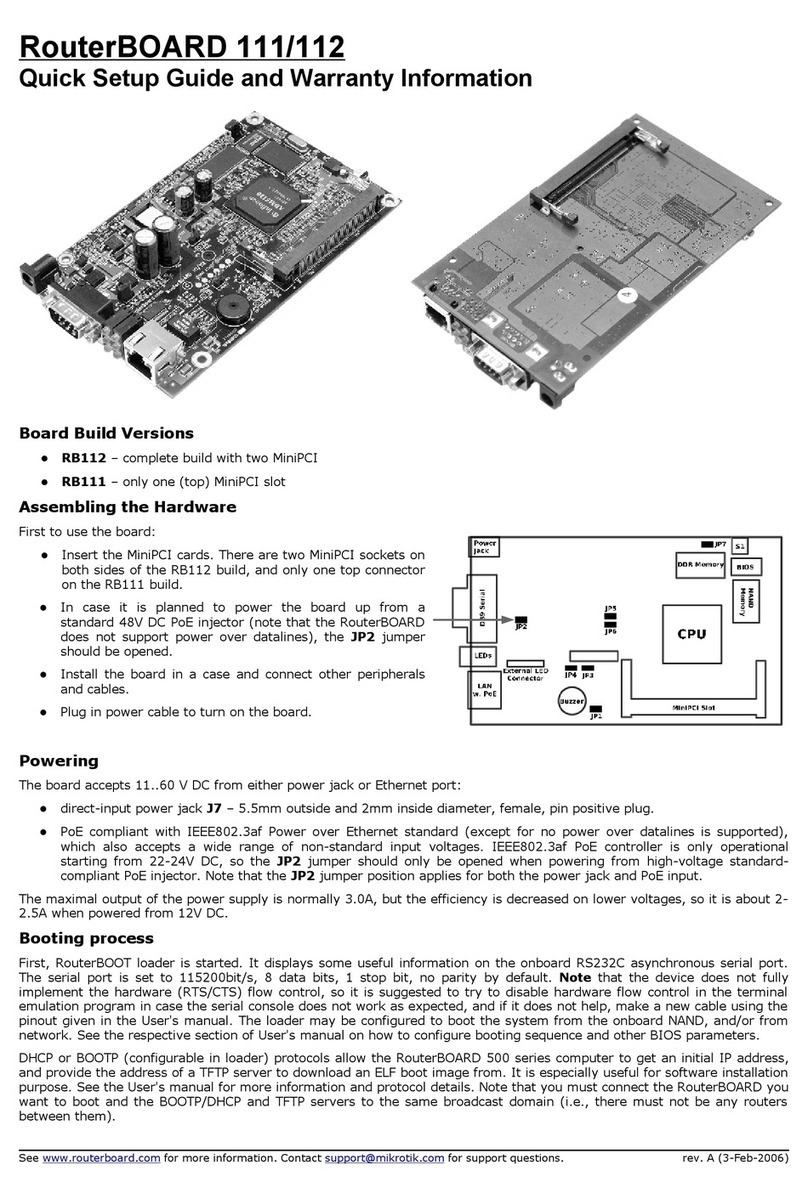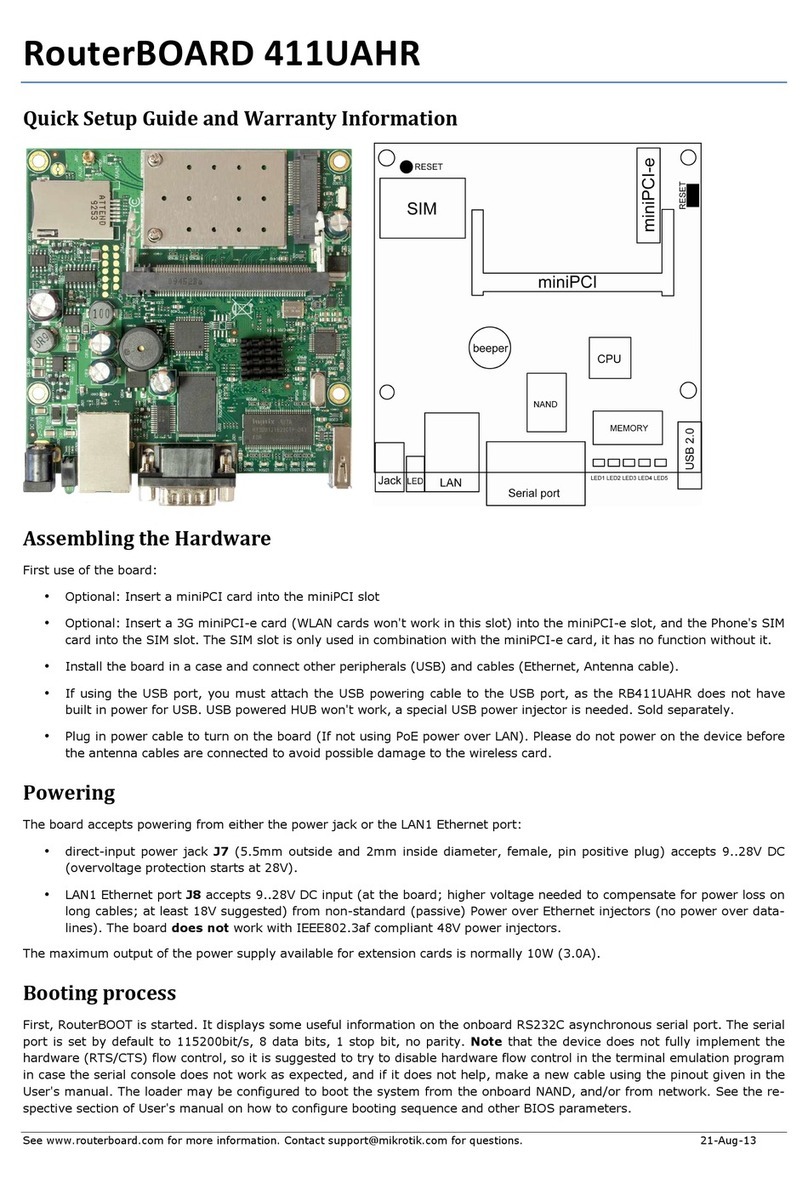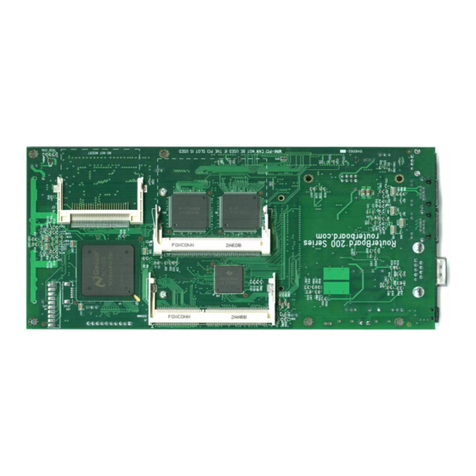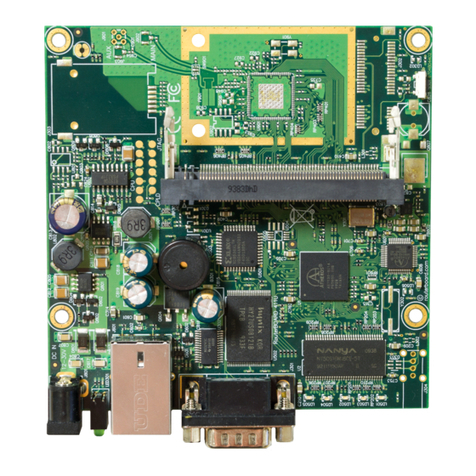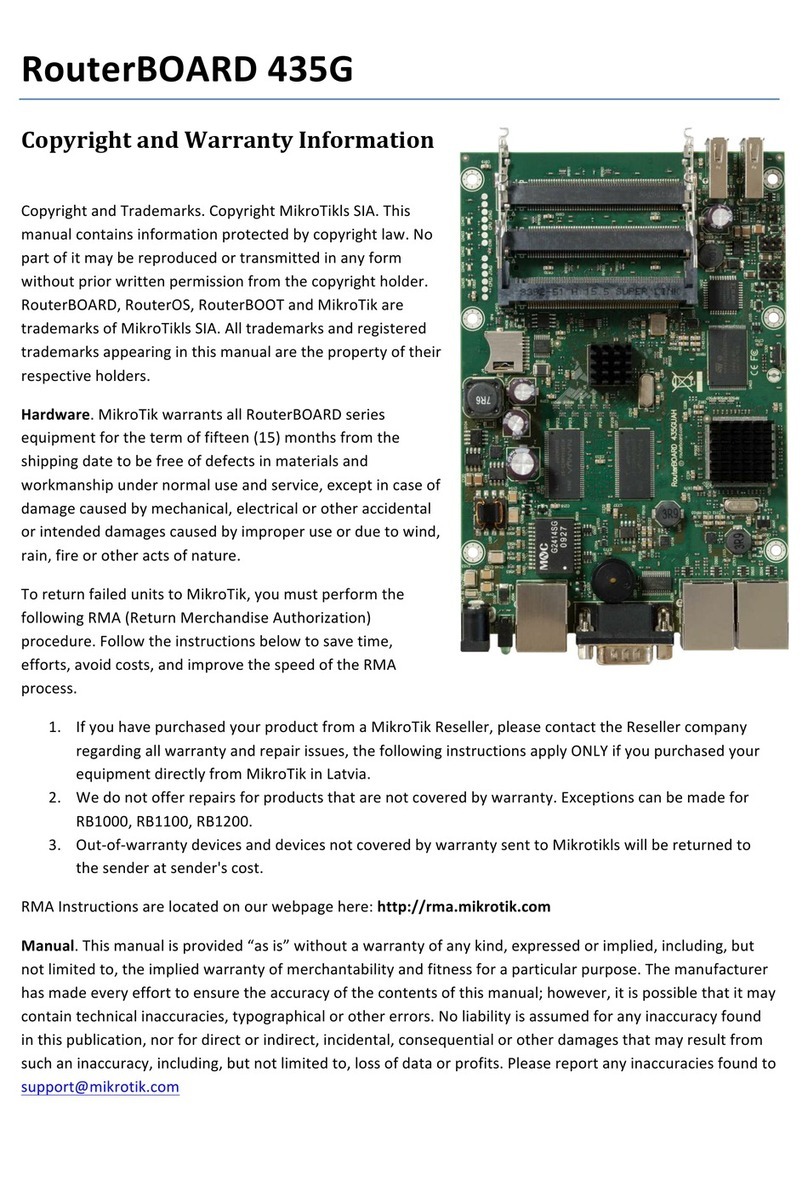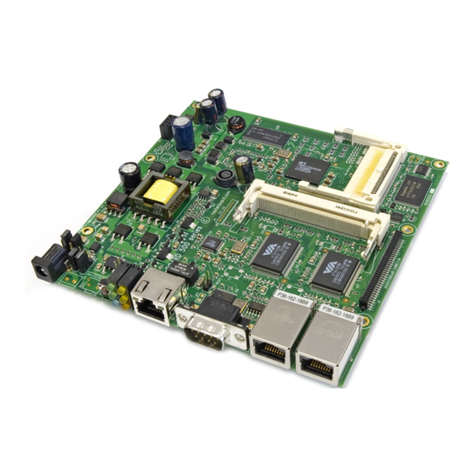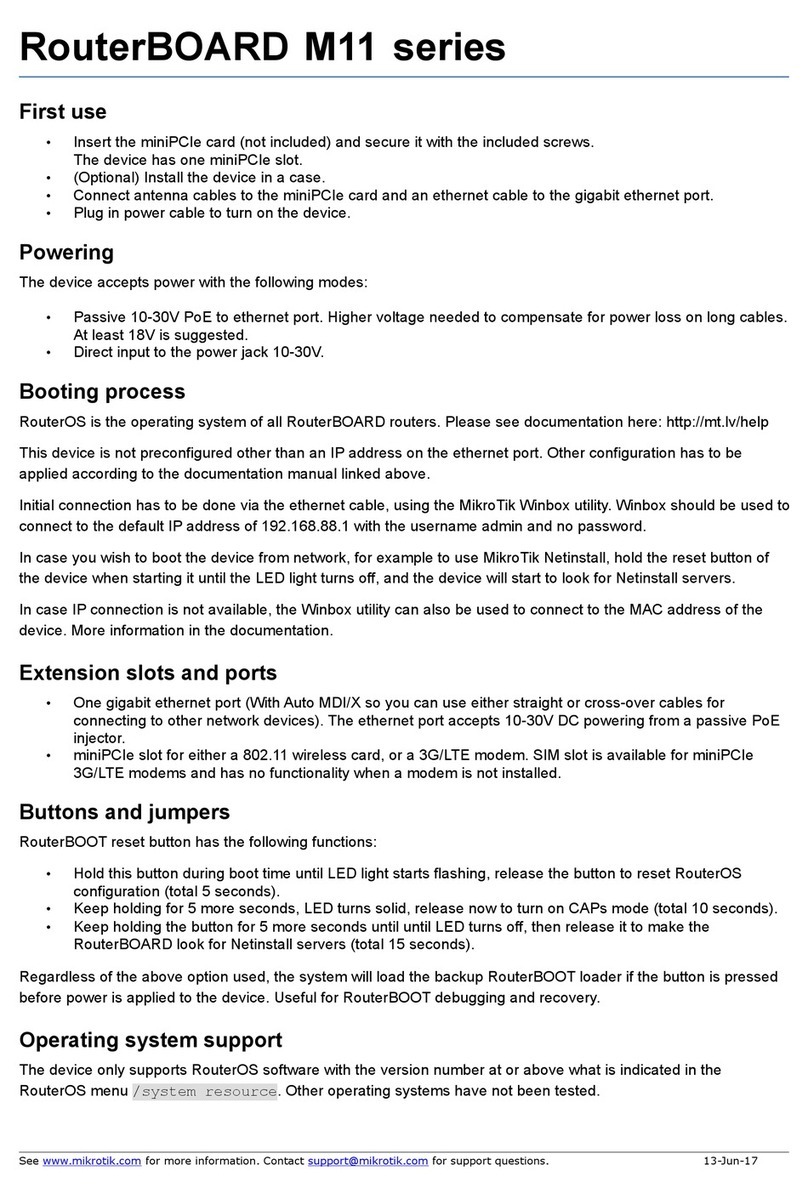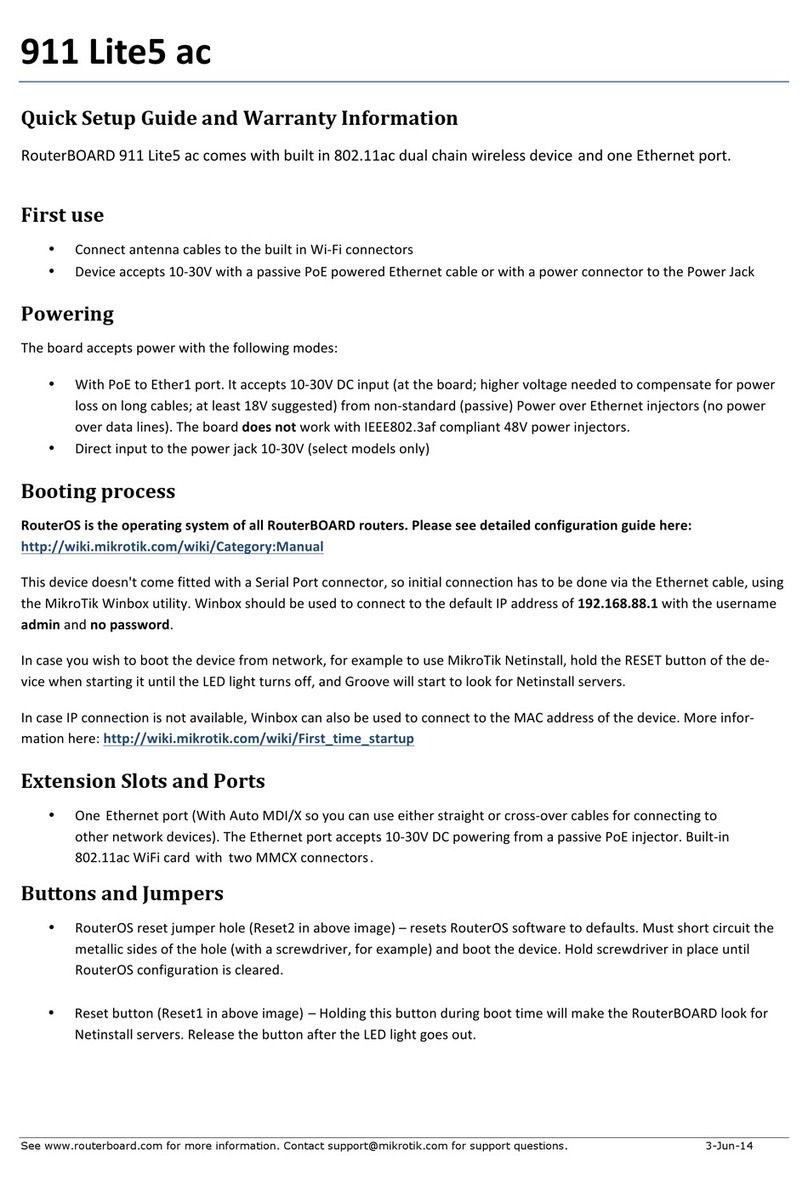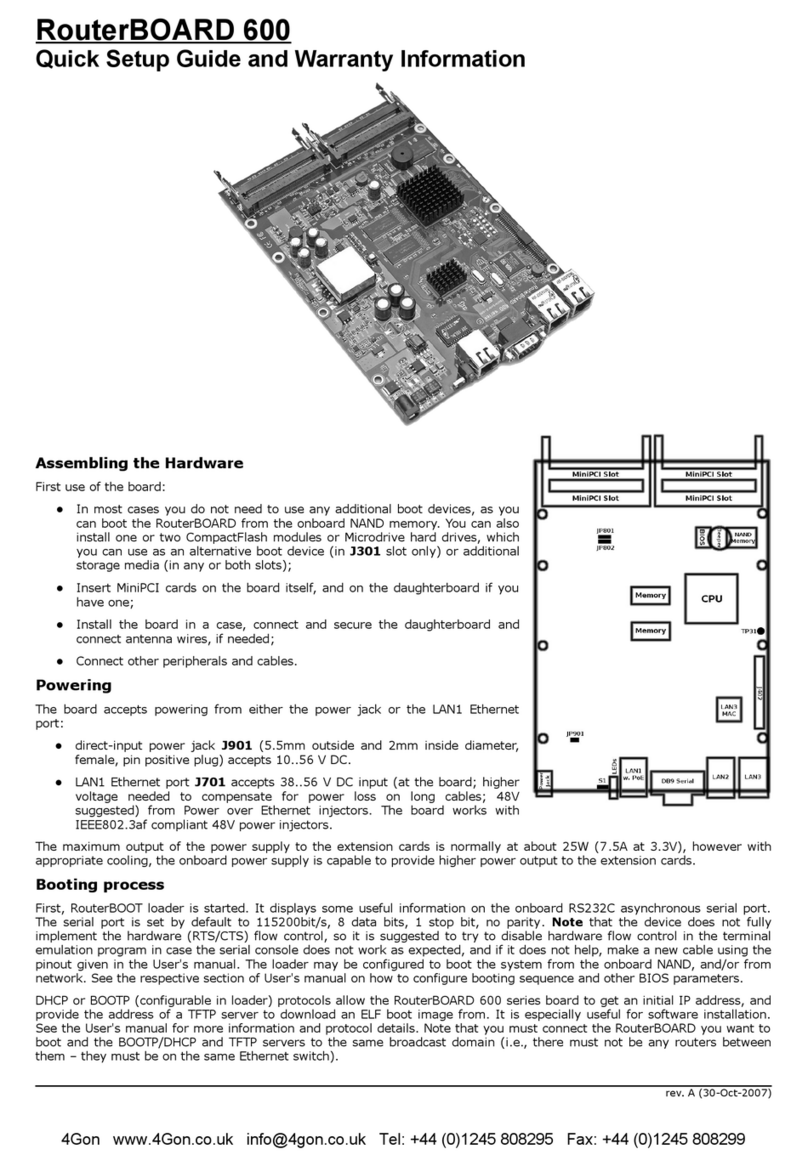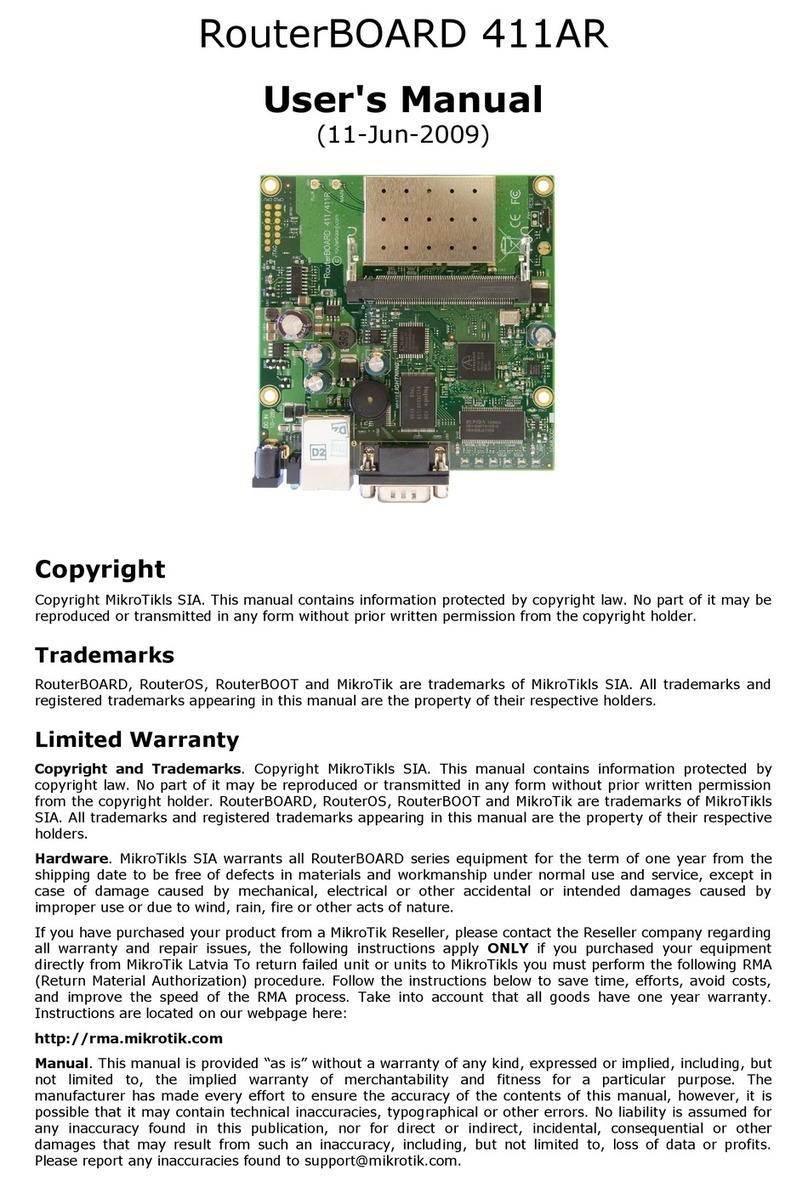
RouterBOARD 192
Quick Setup Guide and Warranty Information
Assembling the Hardware
First use of the board:
●Insert the MiniPCI cards. RouterBOARD 192 pro ides two MiniPCI slots.
●Connect antenna cables to the MiniPCI cards.
●Install the board in a case and connect other peripherals and cables.
●Plug in power cable to turn on the board.
Powering
The board accepts powering from either of the two power jacks, or from the LAN1 Ethernet
port:
●direct-input power jacks J9/J10 (5.5mm outside and 2mm inside diameter, female,
pin positi e plug) accept 9..28 V DC (o er oltage protection starts at 30V).
●LAN1 Ethernet port J13 accepts 9..28 V DC input (at the board; higher oltage
needed to compensate for power loss on long cables – at least 18V suggested) from
non-standard (passi e) Power o er Ethernet injectors (no power o er datalines). The
board does not work with IEEE802.3af compliant 48V power injectors.
CAUTION all three power inputs are always acti e, but only one of them may be used at a
time to a oid damage of equipment.
The maximum output of the power supply a ailable for extension cards is normally 6.7W (2.0A).
Booting process
First, RouterBOOT loader is started. It displays some useful information on the onboard RS232C asynchronous serial port.
The serial port is set by default to 115200bit/s, 8 data bits, 1 stop bit, no parity. Note that the de ice does not fully
implement the hardware (RTS/CTS) flow control, so it is suggested to try to disable hardware flow control in the terminal
emulation program in case the serial console does not work as expected, and if it does not help, make a new cable using the
pinout gi en in the User's manual. The loader may be configured to boot the system from the onboard NAND, and/or from
network. See the respecti e section of User's manual on how to configure booting sequence and other BIOS parameters.
DHCP or BOOTP (configurable in loader) protocols allow the RouterBOARD 192 series board to get an initial IP address, and
pro ide the address of a TFTP ser er to download an ELF boot image from. It is especially useful for software installation.
See the User's manual for more information and protocol details. Note that you must connect the RouterBOARD you want to
boot and the BOOTP/DHCP and TFTP ser ers to the same broadcast domain (i.e., there must not be any routers between
them – they must be on the same Ethernet switch).
Extension Slots and Ports
●Nine Ethernet ports, supporting automatic cross/straight cable correction (Auto MDI/X), so you can use either straight
or cross-o er cables for connecting to other network de ices. The first Ethernet port (marked with the “PoE” label and
detached from the 8-port block) accepts 9..28 V DC powering from a passi e PoE injector. The other eight Ethernet
ports (placed as a block) do not support PoE powering.
●Two MiniPCI Type IIIA/IIIB ports with 3.3V power signaling.
See www.routerboard.com for more information. Contact support@mikrotik.com for support questions. re . B (5-No -2007)
